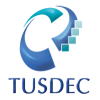Course Contents:
1. Microcontroller Basics
2. Microcontroller Architecture
3. Microcontroller Instruction Sets
4. Memory Interface
5. Addressing Modes
6. Assembly level Language programming
7. Program development
8. Interrupts and interrupt applications
9. Peripheral Support chip
10. Digital Interfacing
11. Analog interfacing and industrial control
12. Microcontroller system applications
List of Practicals:
1. Develop a program for Flash LED on and off
2. Data transfer: load immediate and store to memory.
3. Write a load, store and transfer data program from a description
4. Data transfer: Push/ Pull
5. Transfer and exchange operations
6. Logical AND / OR / EOR operations
7. Add two 2-byte numbers with a 3-byte sum
8. BCD Add
9. Subtract two 2-byte numbers with 2-byte difference (positive / negative results)
10. Add a array of eight numbers using a loop.
11. Average of sum of array by dividing.
12. Multiply and Divide convert F = (5/9)C+32
13. Reading Dipswitch/ display at port B LED’s
14. Displaying LCD message using monitor LCD
15. Subroutine converting byte to an ASCII character byte.
16. “Through BCD” convertor
17. Continuous read using a delay subroutine
18. SWI Interrupt function
19. Sequencer light show
20. Sequencer Traffic light controller.
21. IC3 interrupt program
22. Real Time Interrupt Function


